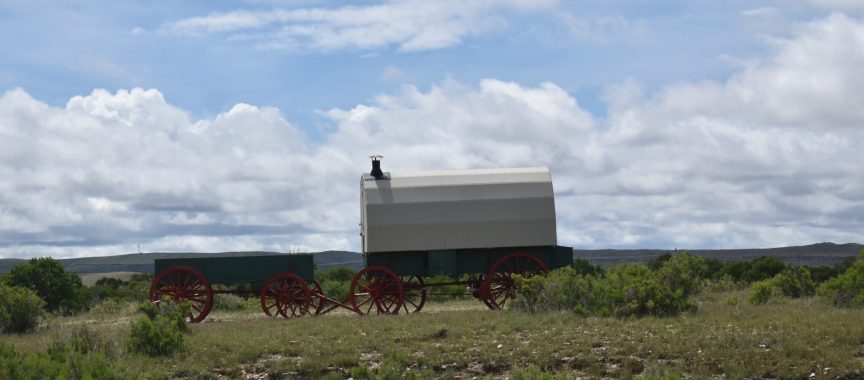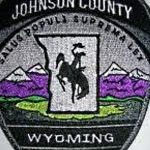News – Sheridan Media

The first sheep were brought into Wyoming in the early 1870s and were looked down on by the cattle ranchers. Sheep didn’t need a bunkhouse full of cowboys or a large herd of cow horses. Sheep were small, silly and smelly animals, that could be controlled by one herder and a couple of good sheep dogs. But they were mostly ignored by the large cattle ranchers.
On Friday, September 17, 1875, the Surveyor General Reeds reported that the sheep numbers in Laramie county were 22,222, and were expected to increase to 78,000 come fall, with the spring lamb crop as well as sheep being brought into Wyoming.

The Cheyenne Daily News, July 21, 1874
For several years, the sheepmen and the cattlemen lived in relative harmony, but as the sheep numbers on open range increased, by 1878, the numbers had grown to over 200,000 head, the cattlemen began to resent the encroachment of what they had always considered ‘their’ grazing lands.
These resentments began to boil over in the early part of the 20th Century, and cattlemen started using violence in an attempt to drive the sheep and sheepmen out of the state.
One such raid on the sheepherders occurred near Tensleep, known as the Spring Creek Raid.
This from The Weekly Boomerang, April 15, 1909 – Murdered Sheepmen Assistedin Establishing Dead Line. Crossed Line Helped Make. Went into Compact as to Grazing Territory, Then Betrayed Cattlemen, is Charge Worland – April 14.—The whole county of Big Horn is now in turmoil of gossip and rumor over one of the most outrageous criminal affairs that his ever disgraced the fair name of any part of Wyoming. Circumstantial evidence forms the main threads in the complete story as it now stands, Joe Allemand and Joe Emge, formerly connected with cattle growing, recently became interested in a drove of sheep numbering nearly 6,000 head. As cattlemen, it Is asserted, they assisted in establishing a dead line in the southern part of Big Horn county, where they resided, against the grazing encroachments of sheep. They crossed this line with their herd, their wagons, employees, etc., and continued on toward their Spring Creek ranch, which they intended to use as a lambing and shearing ground.
Darkness coming on before they reached the ranch, they went into camp, placing their wagons—two of them—some distant apart.
At 11 o’clock that night eighteen masked men, mounted on horses heavily blanketed to the ground, rode up. Two of them entered the wagon occupied by Helmer and Caperal and ordered them to make a hasty get away, which they did In their underclothing En-route they encountered another small posse of horsemen, whd ordered them to return and dress, and they were compelled to go behind a nearby hill and remain quiet under penalty of death. Firing of guns and revolvers was then began on the Allemand and Emge outfit, and in a short time their wagon was a blaze. On the following morning the charred bodies of Lazier and Emge were found amid the wagon ruins, the latter being identified by the heavy gold filling in his teeth. Allemand’s body was found a short distance in front of the wagon, with a bullet through his heart and neck.

Another attack followed, this time closer to home outside of Buffalo.
Daily Enterprise. Sheridan, Wyoming, Monday, Feb. 20, 1911 – Sheepwagons are burned after crossing deadline Camp Tender of Allermand Sheep Co. Disrespects Unwritten Law of the Range and Suffers Buffalo. Wyo.. Feb. 20—Sheep and supply wagons belonging to the Allemand Sheep company were sacked and burned last week at Coal Gulch. about thirty miles southeast of Buffalo, by a band of raiders. Sheriff Jack Neal with a posse immediately left Buffalo on receipt of the news to take up the trail of the marurders, and ran tham as far south as Barber, Wyo., where they appeared to separate. Chester Rasmussen was arrested as one of the raiders. He was lateridentified by a camp tender of the Allemand Sheep company, and in his preliminary arraignment was bound over to the district court in the sum of $2,500.
The trouble seems to have occurred over the crossing of the imaginary “dead line” established three years ago. While the herder in charge of the band of sheep was away with his flocks the camp tender moved the wagons into the prohibited territory, which brought on their destruction by the raiders. Mr Allemand is said to have signed the agreement recognizing the dead line, and his company was the flrst to disregard it. Mr. Allemand is a brotherof Joe Allemand, who was killed at the Spring creek raid in Big Horn county a year ago. In this latter trouble the Allemands are again conspicuous, and it is alleged the camp tender took the wagons across the deadline and invited those who opposed the move to do their worst. The camp tender was severely whipped by a blacksnake whip in the hands of one of the raiders. The sheep were not molested. There is considerable excitement in this city over the affair, and it is likely that further trouble will ensue.
To help to cool the tensions between the cattle and sheep interests along the Powder River, a deadline was established in Sheridan, Campbell and Johnson Counties.
The Sheridan Post, February 24, 1911 –With Fire And Bullet Cattlemen Seek To Defend the Range. Deadly Deadline Bloody Battle Ground on Powder River Unvieled by Dove of Peace— A Gentlemen’s Agreement. Two weeks ago a sheepwagon be longing to the Waisner outfit was riddled by bullets fired by two raiders who crept up a gulch within twenty five yards of their wagon, emptied the magazines of their guns, the bullets tearing their way through the front part of the wagon, wounding a herder in the shoulder, and injuring a horse The raiders then disappeared as quietly as they came. Only a few nights later a sheep wagon and a commissary wagon be longing to Jack Allemand, a big Johnson county sheepman, and a brother of Joe Allemand, who died at Tensleep, in a raid which sent five raiders to the penitentiary, was burned, and two wagons belonging to K P Metcalf suffered the same fate A wagon belonging to Keeline & Sonis known to have been destroyed, and report has it that three wagons be longing to this firm were burned. All these raids have taken place in a little stretch of country not more than forty to fifty miles square, it is located on the middle reaches of the historic Powder river, and includes the corners of Sheridan. Crook and Johnson counties, around which a narrow furrow has been run which marks a line over which a sheepman drives his flocks at his peril. That is the deadline— the famous line of demarkation (sic) between the bovines and the wooleys its location, fixed by a gentleman’sagreement, becomes immovable and impregnable.
Much has been said and written regarding the dead-line, but yet it is a matter little understood. These who have been established in various parts of this and other states often the states in the northwest, but in northeastern Wyoming there is only one. and this, instead of separating two vast territories is simply drawn around a little patch of range land in which the cattle feed, and from which the sheep are excluded At a joint meeting of cattlemen and woolgrowers held in Buffalo,
February 1, 1908, this line was established. Prior to that time, a number of settlers, had made their homes along Powder River, Crazy Woman and Wild Horse creeks and their tributaries Each of these settlers had their little herds of cattle Presently the sheep began to encroach upon their range. And as a result many conflicts took place. During the early winter of 1907-08, many sheep wagons were burned, horses shot, sheep killed and a few men wounded No one knew when he was safe. And both sides of the controversy wanted peace. So a conference was held in Buffalo, attended by some thirty cattlemen and a score of woolgrowers.
This meeting was held in the court house, the matters in dispute were discussed and an amicable agreement was reached. The agreement was for a division of the territory in the district where the trouble, had been occurring, and to accomplish this division, committees were appointed
On February third, these two committees met and formulated a contract. Which was reduced to writing and signed by both committees. Copies of this contract were, delivered to both parties In many ways it is a unique document, and for the first time it is published in full agreement.
This agreement, made and entered into this 3d day of February, by and between Johnson County Woolgrowers association, first party, and the cattlemen of Lower Powder River, Crazy Woman Creek, Fortification Creek, and Wild Horse Creek, parties of the second part, the by and through their representative, committees, for this purpose, That, whereas, various disputes and disagreement between the sheepmen and the cattle men using open range in the vicinity of the lands hereinafter mentioned and bounded, and Whereas, It is to the mutual Interest of all parties concerned that the line between the ranges of the said sheepman and said cattlemen be definitely determined and established now, Therefore, It is hereby agreed, that the following line shall be and hereby is recognized by and between all cattlemen and all sheepmen in said range of the lower Powder River, and vicinity as a boundary between said sheep range and cattle range, to wit

Beginning at Felix. Wyoming; Thence running in a southwesterly direction past the head of Forifacation creek to a point north of the burning coal bank; thence west on the divide to Healy’s spring; thence southwesterly to the point half way between Healy’s spring and Stanley’s end line; thence down Dead Horse, west to a point onPowder river between Gulick’s place and Smith’s place; thence westerly to Pine Tree Spring, thence northwesterly to Sand spring on Flying E gulch; thence northwesterly to Coal spring’ on Coal draw; thence northwesterly to the southeast corner of township fifty-two north of range seventy-nine west; thence northwesterly to the west end of the Tway fence; thence down Crazy Woman creek to Float’s east line;
thence southeast to the top of the divide between CrazyWoman creek and Powder river; thence down the divide to the Post road to Crazy Woman Creek; thence down the Clear creek road in a northwesterly direction to the Jonnson County line; thence following the divide around the head of Cottonwood gulch to Arvada; thence up Wild Horse creek to Felix, the point of beginning.
It is hereby agreed that the lines thus established shall be recognized by all parties concerned as the true boundary line between the sheep aad cattle range immediately, and any sheep now within the cattle range as thus described will be moved out of said range as soon as they can conveniently be moved, and hereafter no sheep will be ranged or grazed within said lines.
According to the terms of the agreement two men were appointed to have the line established, and the two men selected were Richard Youngand Ike Stotts. A man by the name of Carollton did the plowing. For a time both sides respected the agreement, and no further trouble occurred. However, it was not long before a sheepwagon was found beyon the deadline and was immediately burned.
As is natural, both sides claimed to be right, but the violence continued. The cattlemen, with one exception, are all smaller holders having herds from 100 to 500 head. They say the agreement was made in good faith, and insist that its provisions be carried out. They say that if they permit the sheep to encroach upon them it means ruin. Their herds are their only means of support, and tole the sheep take the range means taking bread out of their families mouths.
In 1913, the violence started again on the Powder River.
The Big Horn County Rustler, February 7, 1913 – War Resumed on The Powder River. Sheridan. Wyo., Feb.1. —War between Powder River sheep and cattle interests broke out afresh last night with the burning of a sheep wagon belonging to the Waisner outfit by unknown cattlemen. Herders are reported to have been driven off at the point of guns, and a large number of sheep killed. Sheriff R. M. Hoop and a force of deputies left for Arvada this, afternoon to investigate. Feeling between Wyoming sheep and cattle interests has always run high. Several years ago a “dead line” dividing the range was mutually agreed upon. The line consisted of a plowed furrow, 30 miles in length, the sheepmen agreeing to keep to the north and the cattle interests to the south. A formal agreement was drawn at the time describing the line and covering the conditions governing its establishment.

Today, the violence is over. Many ranches in the Sheridan area run both sheep and cattle, finding that the sheep, being a two-cash crop, bringing in money from both wool and meat, help to diversify the ranches’ income. Like the Johnson County War between ranchers and homesteaders, the war between the sheep and cattlemen was a dark time in Wyoming’s history.
Last modified: September 1, 2025






